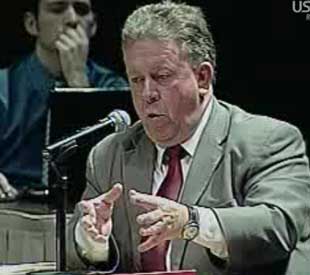 THUNDER BAY – Leader’s Ledger – As the Minister responsible for implementing the Far North Act, I can tell you that I truly believe it is the foundation of a remarkable and frankly unprecedented land use planning process that will benefit the north. While our Ministry moves forward in its work with scores of First Nations communities, I do acknowledge that there is still a lot of misunderstanding and opposition, and I believe that it is my responsibility to address this.
THUNDER BAY – Leader’s Ledger – As the Minister responsible for implementing the Far North Act, I can tell you that I truly believe it is the foundation of a remarkable and frankly unprecedented land use planning process that will benefit the north. While our Ministry moves forward in its work with scores of First Nations communities, I do acknowledge that there is still a lot of misunderstanding and opposition, and I believe that it is my responsibility to address this.
Most people would agree that, good planning leads to good development, which creates good jobs and a strong economy. The fact is that jobs and investment are coming to the Far North, and the benefits of that will be felt by both First Nations communities and the Northern Ontario communities that will become important transportation hubs, and supply and service providers.
Land use planning provides industry, investors and First Nation communities with the clarity they need to seize economic development opportunities in the Far North of Ontario. Planning also protects from development, lands that the First Nations define as ecologically or culturally important, which is why economic development opportunities all across the province and certainly in the Far North cannot and will not move forward without the active participation and support of our First Nations.
Frankly, this is as it should be. The Far North Act clearly recognizes and respects that fact, placing us in a far better position to plan for a future that meets our mutually shared goals of economic development and ecological protection of a vast and priceless part of our province.
Our legislation puts Ontario among world leaders in Boreal protection, providing one of the largest land protection commitments in North America to fight climate change. But to suggest, as some have, that this will turn the Far North into a “vast park” or “museum” is both irresponsible and certainly disrespectful of the First Nations that are actively engaged in this remarkable land use planning process.
Communities in the Far North want good jobs and more opportunity. On the ground, with a number of individual First Nations, our ministry is achieving positive and encouraging results under the Far North land use planning process.
For example, five First Nation communities have worked with the province to complete their community based land use plans (Pikangikum, Cat Lake, Slate Falls, Pauingassi and Little Grand Rapids). Twenty-seven other communities have started to work towards plans. They are starting to map the Aboriginal traditional knowledge and prepare terms of reference for planning. The Cat Lake-Slate Falls First Nation plan was signed by the Chiefs and Minister on July 11th of this year. This plan recognizes existing and potential new economic development opportunities in the areas of tourism, forestry and mining. At the same time, 34 per cent of the Cat Lake-Slate Falls planning area (495,833 hectares) has been designated as a protected area.
All good planning clarifies where development can occur and where land can be set aside for protection. That’s the certainty that companies and investors want and need. That’s how it already happens in communities across Ontario and that’s how it can happen with First Nation communities in the Far North.
As Minister of Natural Resources, I am excited about leading our Ministry through the next stages of this remarkable process; one that will provide us with new economic development opportunities and job creation in the Far North while we also protect a significant portion of the province that is ecologically vital and a source of pride for all the people of Ontario.
Hon. Michael Gravelle MPP
Minister of Natural Resources
Thunder Bay Superior North
